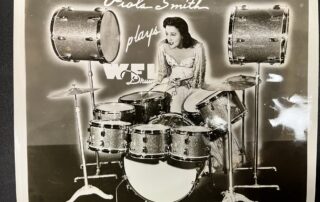Find Jessie Fritsch’s booth at a local art fair, and a crowd of curious onlookers usually isn’t far behind. Fritsch specializes in encaustic art, or paintings using melted beeswax.
“It’s considered one of the first forms of easel painting,” Fritsch said.
Encaustic art dates back to Greek painters more than 2,000 years ago. Some of these ancient paintings still exist today.
“Encaustic is one of the most durable forms of painting. Beeswax is a natural preservative; it’s a natural adhesive,” Fritsch said. “When I learned of encaustic and found out that it could last for thousands of years, I found that truly fascinating. I was fascinated by the ancient history, and then once I actually used the medium and saw how vibrant the colors were, I was completely hooked.”
Fritsch is a full-time artist working out of her Stevens Point studio. She often works on a wooden surface, with paint that consists of beeswax, powdered pigments and Damar Resin, which is a tree sap. The biggest challenge to painting with melted beeswax is speed. Fritsch draws an outline of her painting on the wood so she can work quickly. The paint is melted on a griddle and then applied to the wood with a brush.
“With encaustic there is no drying time. You have about five to eight seconds to put the paint down before it begins to clump up and won’t flow off your brush anymore, and you have to reheat it,” Fritsch said. “I’m constantly reheating my brush and my paint, applying the paint, then immediately going back and reheating my brush.”
Fritsch’s heats the beeswax paint between 180 and 200 degrees. The fumes become toxic at 250 degrees, so she carefully monitors the temperature on her griddle and maintains a strong ventilation system in her workspace. While the paint dries quickly, mistakes are easy to fix.
“Wax is very forgiving in the sense that if you put it down and you didn’t like it, you can scrape it off and start over,” Fritsch said.
She says the part that isn’t so forgiving is the most important step, called “fusing.” It’s why this style of painting is called encaustic art. The word “encaustic” comes from the Greek word enkaustikos, meaning “to burn in.”
“Each layer of beeswax must be fused or burned in to the layer of wax beneath it,” Fritsch said.
Fritsch takes a heat gun and warms the surface of the paint to 180 degrees so it begins to fuse together and form a cohesive sheet of wax. Once that happens, there’s no going back.
“The minute the wax cools, it is finished and you can paint another layer of wax,” Fritsch said.
Fritsch teaches classes and workshops while also doing commission work and paintings on her own. She spends summers showing her work at art fairs across the Midwest, where audiences are usually buzzing over her work.
“It is thrilling to just sit and watch people be like, ‘Oh my God, that’s beeswax? Are you serious?’” Fritsch said. “I just really enjoy teaching people about something that is a lost art.”










